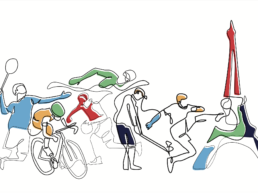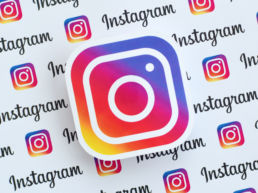As part of The Drum’s Deep Dive into sports marketing, our Creative Director Matt Weiner believes marketers could do a better job tapping into fans emotion outside of event time.
Goosebumps. Chills. The shivers. Whatever you call them, you know when you feel them. That sudden uncontrollable shudder. Hair standing on end. There can be few greater accolades for creative work than such a primeval, visceral reaction. You can’t fake goosebumps. This is a real connection more important than ever in driving marketing effectiveness.
Move your audience and they’ll remember you, value you and become your advocates. So, in order to give your customers those turbo feelings, you’ll first need to get to grips with the science behind ‘cutis anserine.’

What are goosebumps?
They’re an involuntary reaction triggered when intense emotions are experienced. The brain releases stress hormones, which flex tiny muscles in our skin and make our hair follicles stand up on end. It’s an evolutionary hangover from our primate ancestors: if they were scared, their reaction made them look bigger to frighten off threats.
According to research by Estonian-American neuroscientist Jaak Panksepp, when we get goosebumps listening to music or watching a video, what we’re experiencing – just for a nanosecond – is fear. Fear of loss, fear of being alone, perhaps even fear of death. Our brain reacts by pumping out a microdose of adrenaline triggering our body’s response. As soon as our brain recognizes we’re not under threat, however, the feeling disappears.
The Serbian psychologist Vladimir Konečni, on the other hand, believes that our emotional response to powerful art or media is ‘awe’ – a combination of both fear and joy.
But what does any of this have to do with marketing? Well, a great deal if you’re interested in effectiveness. The IPA’s The Long and the Short of It draws on 996 advertising effectiveness case studies, taken from 700 brands across 83 sectors and using over 30 years of data. One key conclusion of the research is that emotional advertising will deliver long-term success, build brand fame and drive profit for your organization.
As co-author Les Binet says:
“Emotions affect the prices people are willing to pay as much as they affect the volume that gets sold. And [the effects] last much longer. In the long run, emotion is where the really big profits lie.”
So you need to understand your target audiences – their passions, motivations and behaviours – if you are to connect with them on an emotional level. We believe creative campaigns and emotional storytelling play a huge part in increasing these connections.
As an F1 fan and WWE fan this gave me goosebumps. We need Paul Heyman as a hype-man in F1! pic.twitter.com/5slbJwBHZl
— Alex Vangeen (@AlexVangeen) July 20, 2022
Collaborating with the International Skating Union (ISU) in 2019, for example, we identified that recreational and professional skaters engage in a whopping 50,000 social conversations a year about the shame, pain and fear of falling on the ice. In response, we created #UpAgain, a campaign dedicated to inspiring skaters to overcome their challenges on and off the ice. A finalist at The Drum Social Media Awards 2020, the three-year campaign featured a series of personal athlete stories about how they coped with mental health, career-threatening injuries or unexpected failure.
It drove an increase in positive sentiment toward the ISU and a better positioning of the federation as one of regulation and inspiration.
But marketers want to cause some goosebumps of their own. There’s a subreddit known as Frisson – a word rooted in the French for shiver – where 200,000+ Redditors routinely vote on music, videos, images and text based on whether or not they are moved emotionally.
Top-ranking entries are extremely varied: a monument to a slave ancestor of Michelle Obama; some official 1974 Lego instructions urging parents not to gender stereotype their kids; a cancer sufferer’s cash till receipts.
To comprehend at a broader level what gives folks the chills, Dr Scott Bannister from the University of Leeds analyzed the Frisson Subreddit and drew a series of fascinating conclusions in a peer-reviewed research paper.
He grouped goosebump moments into two categories. First, ‘moments of shared experience’ – for example, football fans in full voice at a match or music fans lost in revelry at a live gig.
Second, ‘empathy-inducing moments.’ Think of those heart-warming, true-life videos showing a deaf baby being fitted with hearing aids and the joy on their face when they hear their mother’s voice for the first time.
Recent academic research in Nature Neuroscience finds that 50% of us get dopamine-induced chills when listening to music. Panksepp has an intriguing explanation as to why.
He believes that sad songs with a solo soprano or high-pitched instrument may trigger a response equivalent to that of a parent toward the sound of a lost child. The chill we feel listening to this sound is actually an evolutionary physical prompt to find that child.
When we create our campaigns, therefore, if we can feature moments of shared experience, draw on audience empathy and choose the right music, we have a much greater chance statistically of giving our audience goosebumps.
Understanding what triggers human emotions comes with a huge responsibility, of course. Pepsi’s hastily-pulled Black Lives Matter ad starring Kendall Jenner is a cautionary tale.
For emotional marketing to work, genuine purpose needs to be baked into your brand rather than airdropped in for convenience. Ultimately, you need to be in the right position to tell the stories that move people.
But then there’s the difficulty in measuring your impact or the ‘goosebumps.’ Although gathering quantitative data around emotion is valuable, it can raise as many ethical questions as there are hairs on your arm.
In 2014, Korean scientist Young-Ho Cho developed the world’s first goosebump-measuring device using a sticker-like sensor that sat on the skin. “In the future, human emotions will be regarded like any typical biometric information including body temperature or blood pressure,” he said, a tad chillingly.
Less than a decade on, we near the precipice of this vision through emotional artificial intelligence (AI) that decodes facial expressions, analyzes voice patterns, monitors eye movements and measures neurological immersion levels. Meta has recently secured patents for its virtual reality (VR) platform Horizon Worlds, which will track users’ facial expressions and other biological metrics to make its in-world advertising more effective (allegedly). The vast potential for marketeers is clear to see, but with great power comes great responsibility.
Technology that tracks exactly how you feel? It’s enough to give you goosebumps.




